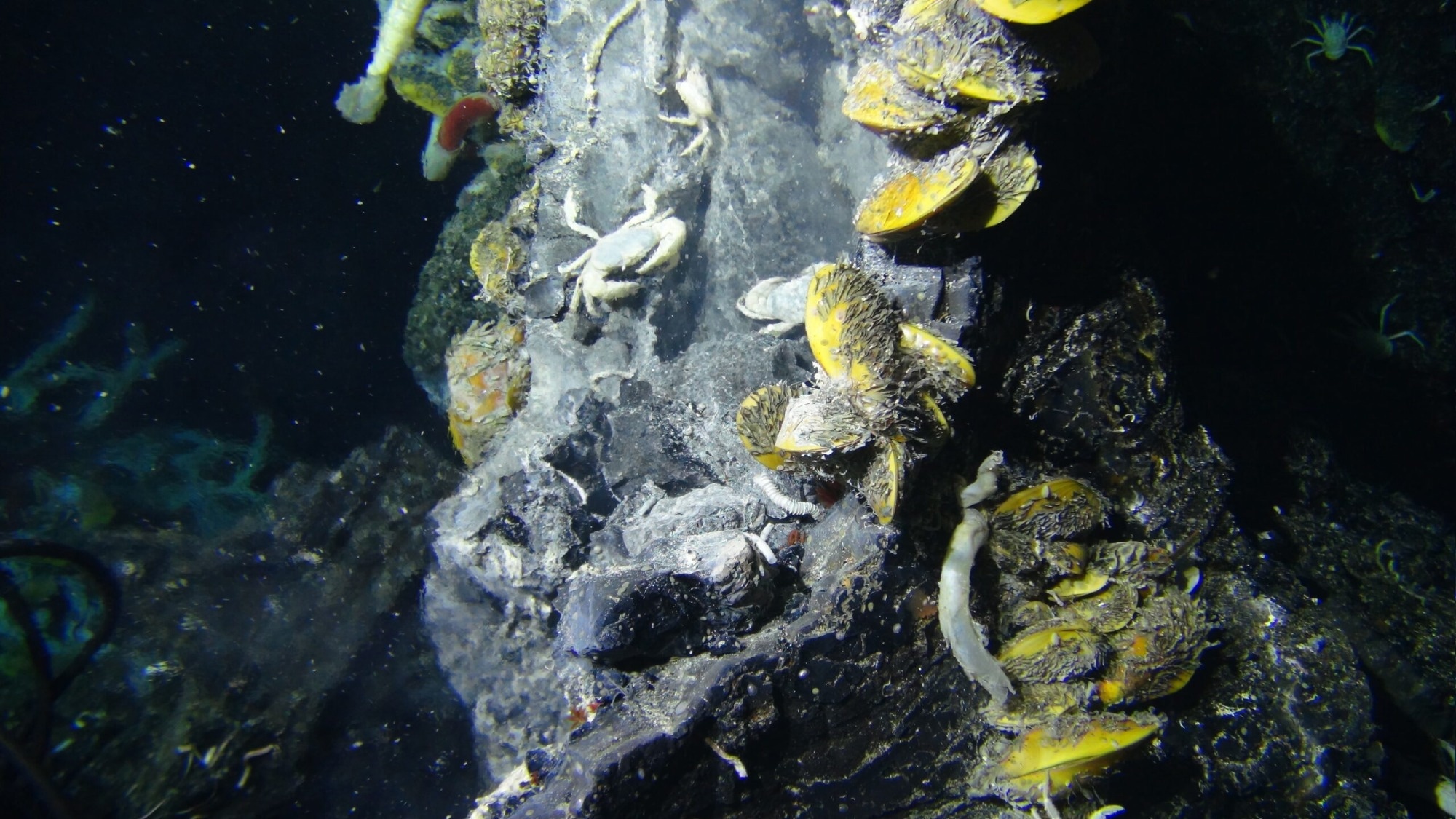Reviewed by Danielle Ellis, B.Sc.Nov 30 2023
Deep-sea hydrothermal vents function as underwater hot springs situated on the ocean floor. Within these vents, seawater infiltrates the ocean crust, undergoes heating, and ascends to the seafloor surface, carrying dissolved nutrients with it.
 The deep-sea hydrothermal vent site known as “Crab Spa” on the East Pacific Rise. Image Credit: Stefan Sievert, WHOI/NSF/HOV Alvin, © Woods Hole Oceanographic Institution)
The deep-sea hydrothermal vent site known as “Crab Spa” on the East Pacific Rise. Image Credit: Stefan Sievert, WHOI/NSF/HOV Alvin, © Woods Hole Oceanographic Institution)
In the absence of sunlight, diverse and lively biological communities thrive around these vents. Within this unique ecosystem, microbes assume the crucial role of primary producers, employing chemosynthesis—a process analogous to the photosynthesis carried out by plants on land.
Hokkaido University researchers, in collaboration with colleagues from the Woods Hole Oceanographic Institution, have undertaken extensive efforts to comprehend microbial diversity in deep-sea hydrothermal environments along the East Pacific Rise.
Their focus has involved microbe cultivation studies. From a warm-water vent famously known as “Crab Spa,” they successfully isolated a novel campylobacterial strain.
This newfound strain was named Hydrogenimonas cancrithermarum, named after the specific site of discovery.
The detailed findings of their research have been published in the International Journal of Systematic and Evolutionary Microbiology.
Chemolithoautotrophic species of the class Campylobacteria (aka Epsilonproteobacteria) are recognized as an ecologically important bacterial group at hydrothermal vents, contributing to primary production.”
Sayaka Mino, Study First Author, Assistant Professor and Research Group Leader, Faculty of Fisheries Sciences, Hokkaido University
Mino added, “On the other hand, some members of this class, e.g., Helicobacter, Arcobacter, and Campylobacter, are also well known pathogens of humans and animals.”
Hydrogenimonas is recognized as a thermophilic genus, well-suited to high temperatures, and it exhibits close relations to both mesophilic and pathogenic genera within the Campylobacteria class.
Despite this association, only two species within this genus have been formally documented to date. However, the current investigation brings forth a groundbreaking revelation: the newly identified strain stands as the inaugural mesophilic organism—adapted to moderate temperatures—and is also a sulfur-oxidizing bacterium within the Hydrogenimonas genus.
This discovery significantly broadens the understanding of the physiological and metabolic traits inherent to this genus.
The discovery of a mesophilic Hydrogenimonas species was unexpected. The strain likely provides us with the opportunity to investigate their evolutionary transition from a thermophilic to a mesophilic and from an autotrophic (capable of creating organic compounds) to a heterotrophic (consumes autotrophs to obtain organic compounds) lifestyle.”
Sayaka Mino, Study First Author, Assistant Professor and Research Group Leader, Faculty of Fisheries Sciences, Hokkaido University
Additionally, a thorough comparative analysis of Campylobacteria genomes was undertaken. The investigation unveiled a noteworthy conservation pattern in the genes associated with the phosphotransacetylase-acetate kinase (Pta-AckA) pathway.
This conservation was observed not only within Hydrogenimonas but also in the mesophilic species that had evolved from Hydrogenimonas, irrespective of their metabolic characteristics and pathogenic properties.
The Pta-AkaA pathway has been reported in a pathogenic Campylobacter species to play an important role in colonizing hosts. While we don’t yet understand its specific role in the genus Hydrogenimonas, the acquisition of the genes might represent a key event that enabled their diversification from deep-sea vents to other environments.”
Dr Stefan Sievert, Leader of the Research Group, Woods Hole Oceanographic Institution
Mino concluded, “Nowadays, studies of microbial diversity largely rely on cultivation-independent metagenomic sequencing approaches which produce massive amounts of data. Yet, it is vital to remember the significance of cultivation, as shown by the isolation of the new strain that differs markedly from other members of the genus Hydrogenimonas.”
The researchers will persist in their endeavors to identify novel culturable species, thereby enhancing the comprehension of the diversity within Campylobacteria.
Source:
Journal reference:
Mino., et al. (2023) Hydrogenimonas cancrithermarum sp. nov., a hydrogen- and thiosulfate-oxidizing mesophilic chemolithoautotroph isolated from diffuse-flow fluids on the East Pacific Rise, and an emended description of the genus Hydrogenimonas. International Journal of Systematic and Evolutionary Microbiology. doi.org/10.1099/ijsem.0.006132.